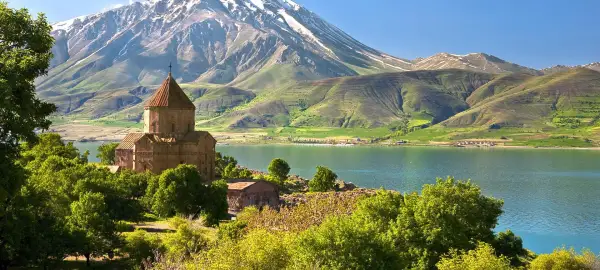Tourcode: TE10
- Overview
- Info & Inclusions
- Itinerary
- Map & Hotels
- Photos
- Dates & Prices
- Max Group Size 18
- Hattusas UNESCO site and Hittite Empire capital
- Haunting medieval ruins of Ani with thousand church spires
- Cliff-hanging Sumela Monastery in Pontic Mountains
- Lake Van boat excursion to Akdamar Island's Armenian church
- King Antiochus's audacious mountaintop monument at Nemrut Dag
- Göbeklitepe, the world's oldest temple complex predating Stonehenge by 6,000 years
- Singles friendly (view options for single travellers)
Black Sea coastlines, soaring mountain plateaus, and forgotten empires that once rivaled Rome and Babylon.
Major highlights include the haunting medieval city of Ani—Armenia's former capital with its thousand church spires—the cliff-hanging Byzantine marvel of Sumela Monastery, and the audacious mountaintop monument of King Antiochus at Nemrut Dag.
We explore the sophisticated Hittite capital of Hattusas, cruise the turquoise waters of Lake Van to visit the exquisite Church of the Holy Cross, and discover Göbeklitepe, the world's oldest temple complex predating Stonehenge by 6,000 years. We walk through Trabzon's layers of Greek, Byzantine, and Ottoman heritage and experience the frontier atmosphere of Kars near the Armenian border.
This journey concludes with Istanbul's timeless blend of Byzantine grandeur and Ottoman splendor, offering an unforgettable immersion into Turkey's most extraordinary eastern realms.
- MealsSavour authentic flavours with included daily breakfasts and dinners at hotels or handpicked local restaurants—immersing you in local cuisine without worrying about reservations or budgets.
- Transport & Logistics
Private air-conditioned coaches and included internal ferries and flights—ensuring hassle-free travel so you can focus entirely on the discoveries ahead.
"Adventures Abroad tour leader's management and guest services managed the tour with great skill and dedication. The tour leader was on top of every move and transfer. We have not experienced any issues with logistics and had a great time."
~ JULIA O"The tour leader did an excellent job coordinating some difficult travel logistics, power outage issues and resolving problems and dealing with guests who had unrealistic expectations."
~ CYNTHIA COLLINS - Expert Guidance
Unlock insider secrets at every landmark with your full-time Tour Leader and expert local guides , all gratuities covered—no hidden tipping surprises—so you immerse fully in your destination's stories, worry-free. (Except for the tips to your tour leader at the end of your tour.)
"Amazing tour guide. Our tour guide was very well organized, Her passion, knowledge, and enthusiasm completely transformed the travel experience into something truly unforgettable..."
~ MELANIE LEMAIRE"Highly recommend every trip with Adventures Abroad. It's a well organized and well thought out adventure. The tour leaders are friendly, knowledgeable and experienced professionals. Highly recommend this company."
~ SUSAN WALL - Sightseeing & EntrancesAll entrance fees for sites visited as per the itinerary—no hidden costs—so you can explore ancient ruins and excursions with complete peace of mind.
- AccommodationsUnwind in clean, well-located 3 to 4-star hotels with private en suite facilities—handpicked for comfort and convenience after each day's discoveries—so you can rest easy knowing your stay supports the real adventure, not steals the spotlight.
- Small Group
Discover the world in small groups of up to 18 travellers plus your expert Tour Leader—unlocking spontaneity, off-the-beaten-path adventures, and genuine connections at a relaxed pace, free from crowds.
"Looking Forward to My Next Adventure The best feature of the Adventures tour was the small size that allowed the group to quickly load up, let everyone get acquainted within the first 24 hours, capitalize on unplanned surprises along..."
~ PHILIP BLENSKI"Good value for a great time I have traveled with Adventures Abroad for over 20 years now. Well thought out, interesting itineraries and the other travelers congenial and friendly. The price always seems fair and overall a..."
~ Trusted Customer - Airport Transfers For Land & Air CustomersWe handle hassle-free airport transfers for all our land and air tour customers—plus early arrivals or late departures when you book extra hotel nights directly with us for added peace of mind.
- International airfare to/from the tour.
- Tour Leader gratuities, lunches, drinks, personal items (phone, laundry, etc), international (if applicable) and domestic air taxes, visa fees, and excursions referenced as 'optional'.
- Airport transfers for Land Only customers.
- Seasonality and Weather:
This tour focuses on Eastern Turkey's mountainous terrain and high plateaus, where continental climate creates significant temperature variations. Spring and autumn offer ideal conditions for exploring remote archaeological sites while avoiding summer's intense heat and winter's harsh cold.
Late Spring: Eastern Anatolia awakens from winter with increasingly warm days and cool nights. The Black Sea coast and lower elevations enjoy comfortable temperatures with lush green landscapes and spring wildflowers. Higher elevations including Erzurum, Kars, and the Mount Nemrut region remain quite cool, with morning temperatures near freezing and conditions that can be variable.
Early Autumn: Autumn brings crisp, stable conditions throughout the region. Days remain comfortable for sightseeing while nights grow cool, particularly at higher elevations. The Black Sea coast enjoys pleasant temperatures, while the eastern highlands and Lake Van plateau experience noticeable cooling. Pre-dawn ascents of Mount Nemrut require warm clothing. Conditions are generally dry and clear, ideal for photography and exploring remote sites. - Transport and Travel Conditions:
Our land transport is via private air-conditioned motor coach, 36-40 seats depending on ultimate group size (see 'Group Size').
Turkish roads are generally good and travelling is not arduous, though we do have several full-yet-scenic days with stops of interest. If you take a look at a map and our route, you will note that Turkey is a large country and the distances between some of our overnight points can be considerable. If we ever get comments about the 'difficulty' of this trip, it's in reference to full days of bus travel and some hotel arrivals/evening meals that may be later than you may be accustomed. The tour is not strenuous with regard to our activities, but it is busy. Our tours of towns and cities, as well as archaeological sites, are conducted on foot and feature uneven surfaces and plenty of stairs.
Our "level 2" rating reflects the ambitious nature of our program, some early starts and full days of travel, the considerable amount of walking we'll do, the remoteness of some locations, and the possibility of heat in some locales.
Am I suitable for this tour? Please refer to our self-assessment form - Activity Level: 2
These are particularly busy tours that feature a lot of moving around, sometimes by train and short journeys on local transport. Walking tours of towns and cities are leisurely but you should be prepared to be on your feet for several hours. Some of our cultural trips that occur at high altitude and/or require greater independence with baggage handling (at hotels, airports, train stations) also fall into this category.
To learn more about the Activity levels, please visit our tour styles page. - Accommodation:
Well-located, air-conditioned, mid-range hotels (3-4 star) throughout. All hotels have en-suite bath.
Hotel porter service is generally available (see 'Inclusions'). Single rooms are limited and likely smaller than twins.
Click on the "Map & Hotels" tab for more information. - Staff and Support:
Tour Leader and local guide throughout, driver(s), local step-on local guides in various locales. - Group Size:
Maximum 18 plus Tour Leader
- Day 1:Arrival in AnkaraArrival in Ankara, Turkey's modern capital.
Ankara offers a unique blend of ancient history and modern urban life. It's a city that's often overlooked by tourists, but it's well worth a visit. For those arriving early enough (or if you have booked an extra hotel night), a highlight is the Museum of Anatolian Civilizations, which showcases artifacts from ancient Anatolia.
Later today, you may be joining other travellers coming from our tour of Western Turkey, accompanied by your Tour Leader.
Overnight in Ankara.
Included Meal(s): Dinner, if required - Day 2:Ankara - Hattusas - Amasya - SamsunThis morning we embark on a scenic drive towards the Black Sea, stopping at Çorum to explore Hattusas, the extraordinary capital of the Hittite Empire and a UNESCO World Heritage site. Between 1650 and 1200 BC, the Hittites ruled an empire that rivalled Egypt and Babylon, controlling trade routes between Europe and Asia from this strategic Anatolian stronghold.
Walking through Hattusa's massive gates, temples, and royal palace foundations, we begin to understand the sophistication of this Bronze Age superpower. The Hittites were master diplomats and warriors, the first civilization to work iron systematically, and pioneers of international law---their peace treaty with Egypt is history's earliest known diplomatic agreement.
Our journey continues to Amasya, one of Turkey's most picturesque cities, stretched along the banks of the Yeşilırmak River beneath towering cliffs. This stunning location made Amasya a favourite residence of Ottoman princes, who learned statecraft here before ascending to the throne. Traditional Ottoman houses cascade down hillsides in perfect harmony with the natural landscape.
We visit the tomb of Prince Danis-Mend Gazi, an important figure in early Ottoman expansion into Anatolia. Amasya's history stretches back to the ancient kingdom of Pontus, but its Ottoman architectural heritage creates an atmosphere of particular elegance and refinement.
As evening approaches, we arrive in Samsun, Turkey's most important Black Sea port and a city of profound historical significance. Here on 19 May 1919, Atatürk began the Turkish War of Independence that transformed the defeated Ottoman Empire into the modern Turkish Republic.
Overnight in Samsun.
Included Meal(s): Breakfast and Dinner - Day 3:Samsun - TrabzonOur journey continues eastward along Turkey's dramatic Black Sea coast to Trabzon, the "Byzantium in Exile" that has captivated travellers from Marco Polo to Rose Macaulay. This ancient port city served as capital of the Trebizond Empire after Constantinople fell to the Fourth Crusade in 1204, maintaining Byzantine culture and Orthodox Christianity for another 250 years.
We begin at the 13th-century Church of Hagia Sophia, built by Emperor Manuel I on the site of an earlier pagan temple. After suffering centuries of damage and neglect, the church's magnificent Byzantine frescoes---among the world's finest examples of late Byzantine art---were painstakingly restored during the 1960s. Inside, vivid scenes from the Old Testament and the life of Christ demonstrate the spiritual intensity and artistic sophistication of medieval Orthodoxy.
Our walking tour of old Trabzon reveals layers of history stretching back 2,700 years. Milesian Greek colonists settled here in the 7th century BC, attracted by the metal trade and the natural harbour created by a table-like headland---giving the city its ancient name Trapezous, meaning "table."
We explore the Tabakhane Bridge, ancient city walls, and the Middle City before reaching the Ortahisar Mosque, originally Trabzon's main Byzantine cathedral where emperors celebrated weddings, funerals, and coronations. At the Upper Citadel, we stand where the Imperial Palace once overlooked the dramatic ravine that provides Trabzon's natural defences.
Crossing the medieval Zagnos Bridge, we conclude at the Ottoman Mosque of Gülbahar Hatun, demonstrating how Islamic architecture adapted Byzantine traditions to create uniquely Turkish sacred spaces.
Overnight in Trabzon.
Included Meal(s): Breakfast and Dinner - Day 4:Trabzon - Sumela Monastery - ErzurumThis morning we venture deep into the Pontic Mountains to discover Sumela Monastery, one of Orthodox Christianity's most spectacular and sacred sites. According to tradition, the Athenian monk Barnabas discovered here in 385 AD the miraculous icon of the Virgin Mary believed painted by St. Luke himself.
The monastery developed during the 6th century, though the surviving buildings date mainly to the 13th and 14th centuries when Byzantine emperors of the Komnenos dynasty celebrated their coronations at this remote mountain sanctuary. The icon's miraculous powers became so famous that even Ottoman sultans made offerings here, demonstrating the respect Turkish rulers showed for Christian holy sites.
We ascend through lush forest along a winding path---about 250 metres of gentle climbing that takes approximately 30 minutes. Suddenly, the monastery appears, seemingly impossible, clinging to a sheer cliff face 300 metres above the valley floor. This first glimpse creates an unforgettable moment of wonder and spiritual awe.
Though now partially ruined, brilliant frescoes still adorn the main chapel's interior, depicting religious scenes with the distinctive intensity of late Byzantine art. Exploring Sumela's cells, chapels, and galleries carved into living rock, we understand how generations of monks created a complete spiritual community in this vertical sanctuary.
Breaking for lunch en route to Erzurum where you can sample regional specialities of the eastern Black Sea: lahana corbasi (cabbage soup), hamsi (anchovies), and muhlama---melted cheese served with bread that reflects the area's dairy-farming traditions..
Overnight in Erzurum.
Included Meal(s): Breakfast and Dinner - Day 5:Erzurum - Kars & AniThe eastern Anatolian morning breaks as we journey toward one of history's most haunting archaeological treasures. Our destination lies at Turkey's Armenian border, where the ghost capital of Ani once rivalled Constantinople itself.
We arrive in Kars, a frontier town weathered by empires, before venturing to Ani---the medieval Armenian city that housed over 100,000 souls beneath a thousand church spires. By the 10th century CE, "no city in Europe could compare in size and magnificence to Ani," recorded chroniclers. Today we understand why as we walk among red and black sandstone ruins crowning this dramatic gorge.
Mongol raids, the devastating 1319 earthquake, and Tamerlane's final assault transformed this glorious metropolis into today's haunting ruin. We explore the Cathedral of Ani, its soaring arches still defiant against time, and trace Armenian frescoes that have survived seven centuries. The Church of St. Gregory reveals intricate stonework that speaks to medieval Armenian artistry at its pinnacle.
From the precipice where city walls plunge into the Arpacay Gorge, we gaze across no-man's land toward modern Armenia—a reminder that borders shift while Ani's stones remain eternal witnesses. The wind carries whispers of merchants who once filled these streets, of pilgrims who worshipped in these sanctuaries, of a civilization that flourished at the crossroads of empires.
Overnight in Kars.
Included Meal(s): Breakfast and Dinner - Day 6:Kars - Ishak Pasa Sarayi - Lake VanMount Ararat dominates the eastern horizon as we depart Kars, its snow-capped peak at 5,165 metres (16,946 feet) earning the Arabic designation "roof of the world." According to Genesis, this sacred mountain cradled Noah's Ark as floodwaters receded.
We break for lunch in Dogubeyazit, just 35 kilometres (22 miles) from Iran's border, where ancient Silk Road caravans once navigated mountain passes connecting empires across continents.
Our afternoon destination is Ishak Pasa Sarayi, perched impossibly on a mountainside like an architectural marvel suspended between earth and sky. This 18th-century palace represents brilliant synthesis—Ottoman, Persian, Armenian, and Georgian design traditions merged in honey-coloured stone. Built by a Kurdish chieftain and completed by Ishak Pasa in 1784, the palace once boasted doors plated in gold and studded with precious stones.
We explore courtyards and chambers where each room reveals different architectural influences. The palace's strategic position overlooking Turkey, Armenia, and Iran reminds us of Kurdish chieftains' vital role controlling mountain trade routes.
Continuing westward through spectacular mountain landscapes, Lake Van emerges like an inland sea, stretching 119 kilometres (74 miles) across the Anatolian plateau. This extraordinary body—Turkey's largest lake and the world's largest soda lake—was born from volcanic drama when Mount Nemrut's lava flows blocked the basin's natural outlet millions of years ago.
We arrive in Van with time for proper rest after our journey.
Overnight in Van.
Included Meal(s): Breakfast and Dinner - Day 7:Lake Van Comprehensive TouringToday we explore Lake Van's remarkable treasures. The lake's unique alkaline chemistry—four times saltier than seawater—creates an environment supporting endemic species including the famous Van cat with mismatched eyes and pearl mullet. These turquoise waters reach 450-metre (1,476-foot) depths, reflecting surrounding mountains in shades that change hourly.
At Van Museum, we encounter the remarkable Urartian civilization that dominated this region from the 9th to 6th centuries BCE. The collection's intricate gold jewellery reveals sophisticated culture controlling trade routes linking Mesopotamia with Anatolia.
We ascend Van Castle, the commanding rocky outcrop serving as the Urartian empire's administrative heart. From this dramatic citadel known as Tushpa, Urartian kings commanded territories stretching from the Caucasus to northern Iraq. Stone battlements, temple ruins, and royal tombs bear cuneiform inscriptions revealing Bronze Age civilization's sophisticated administration.
Our afternoon boat ride across Lake Van's azure waters carries us toward Akdamar Island, rising like a jewel just two kilometres (1.2 miles) offshore.
The 10th-century Armenian Church of the Holy Cross stands as medieval architecture's masterpiece, its red tuff stone walls alive with intricate relief carvings. King Gagik I Ardzruni commissioned this marvel between 915-921 CE. Exterior walls flow with carved narratives: Adam and Eve, Jonah and the whale, David facing Goliath.
Inside, medieval fresco fragments whisper stories of Armenian Christianity's golden age, when this island served as the Armenian Patriarch's seat.
Overnight in Van.
Included Meal(s): Breakfast and Dinner - Day 8:Lake Van - KahtaWe embark upon our journey westward through eastern Anatolia's rugged magnificence toward Mount Nemrut's foot. This route traces ancient pathways connecting Armenian highlands with Mesopotamian plains, carrying us through landscapes witnessing countless civilizations' rise and fall.
The road winds through spectacular Bitlis Canyon, where geological forces carved deep gorges over millions of years. Sheer cliffs tower above rushing waters as we navigate this dramatic terrain. We pass Kurdish villages where traditional life continues as it has for centuries, crossing boundaries between ancient kingdoms—Urartian, Commagene, and Roman territories that once contested control over these vital mountain passes.
Changing vegetation and architecture tell our westward progress story: Armenian plateau's harsh beauty gradually giving way to anti-Taurus ranges separating Anatolia from Mesopotamia.
Our destination, Kahta, sits in attractive countryside at Mount Nemrut's foot, serving as gateway to archaeology's most extraordinary discoveries. The population here is predominantly Kurdish, descended from the Reshwan tribe calling these mountains home for generations.
As evening approaches and Mount Nemrut's distinctive 2,150-metre (7,054-foot) profile becomes visible against darkening sky, anticipation builds for tomorrow's pre-dawn ascent. The summit ahead conceals the ancient world's most audacious artistic achievement—a fusion of Greek, Persian, and Armenian religious traditions that defied the gods themselves.
Overnight in Kahta.
Included Meal(s): Breakfast and Dinner - Day 9:Mount Nemrut TouringBefore dawn, we begin ascending Mount Nemrut toward archaeology's most spectacular discovery. King Antiochus I of Commagene, ruling this buffer kingdom between Rome and Parthia from 69-34 BCE, conceived a monument so audacious it staggers imagination—a funerary complex where he declared himself equal to gods.
At Arsameia, the Commagene capital, a perfectly preserved relief shows Mithridates I, Antiochus's father, clasping hands with Hercules in divine partnership. The 5-metre (16-foot) stele and inscriptions speak of royal bloodlines tracing to both Alexander the Great and Darius of Persia—genealogical claims justifying Antiochus's ultimate hubris above.
The final 600-metre (1,969-foot) summit climb requires 20 minutes of steady hiking, building anticipation for the revelation awaiting us. Cresting the ridge, the Western Terrace reveals Antiochus's achievement: colossal seated statues in semi-circle, their 2-metre (6.5-foot) heads representing syncretic gods—Helios-Mithra, Fortuna, Zeus-Ahuramazda, Antiochus himself, and Hercules.
The Eastern Terrace, better preserved and more dramatic, displays these divine figures in original majesty. Between them lies the 50-metre (164-foot) artificial tumulus of crushed stone concealing Antiochus's unexcavated tomb. The king left detailed inscriptions explaining his divine status and specifying elaborate rituals celebrating his birth and coronation for eternity.
Relief panels show Antiochus's divine partnerships, while the lion horoscope relief records the precise astrological moment—July 7, 62 BCE—when planets aligned to herald a god-king's arrival.
Overnight in Kahta.
Included Meal(s): Breakfast and Dinner - Day 10:Kahta - Gobeklitepe - Sanliurfa (Urfa)This morning we journey toward Sanliurfa, known simply as Urfa, one of humanity's most ancient continuously inhabited cities. Our route carries us deeper into the cradle of civilization.
Our first destination is Gobeklitepe, the site that transformed our understanding of human social organization. Discovered in 1995, this 11,500-year-old temple complex predates Stonehenge by 6,000 years and the Egyptian pyramids by 7,000 years. Walking among the circular stone enclosures with their massive T-shaped pillars carved with animals and abstract symbols, we confront a revolutionary truth: organized religion and monumental architecture emerged before agriculture, not after.
Hunter-gatherer peoples constructed this vast ceremonial complex, suggesting that spiritual and social needs drove civilization's development. The precision of megalithic construction and sophisticated carved reliefs challenge previous assumptions about prehistoric societies.
At the new Sanliurfa Archaeology Museum, one of Turkey's most impressive modern cultural institutions, we explore Gobeklitepe's context through exceptional artifacts and displays. Life-sized reconstructions help us visualize these ancient ceremonies, while the comprehensive collection traces the region's continuous inhabitation from the Stone Age through successive empires.
Arriving in historic Urfa by evening, we enter a city sacred to three Abrahamic faiths. According to tradition, the prophet Abraham was born here.
Overnight in Urfa.
Included Meal(s): Breakfast and Dinner - Day 11:Urfa Touring - Fly to IstanbulOur final morning in southeastern Anatolia offers several exploration options, depending on group interest and flight timing.
We may journey to Harran, the ancient city mentioned in Genesis where Abraham stopped on his journey from Ur to Canaan.
Harran's distinctive beehive houses, constructed using architectural techniques unchanged for millennia, create an otherworldly landscape. The ruins of Harran's great mosque and university remind us that this was once a centre of Islamic learning where scholars translated Greek philosophical texts that would later spark Europe's Renaissance.
Alternatively, we might explore the Urfa Mosaic Museum, housed in the beautifully restored old market building, containing the remarkable "Amazons Mosaic" and other Roman and Byzantine treasures discovered in the region.
For those preferring to remain in Urfa itself, the old city offers extraordinary discoveries. The Pool of Abraham (Balikligol) remains a functioning pilgrimage site where sacred carp swim in waters believers hold miraculous. The surrounding complex of mosques, madrasas, and caravanserais creates an atmosphere of timeless devotion.
This afternoon we transfer to Urfa's airport for our flight to Istanbul, carrying us from civilization's ancient birthplace to the city bridging East and West. Landing in Istanbul, minarets and domes punctuating Istanbul's skyline welcome us like old friends after journeying through Anatolia's heartlands.
Tonight offers reflection on extraordinary diversity—landscapes, cultures, and historical periods experienced together.
Overnight in Istanbul.
Included Meal(s): Breakfast and Dinner - Day 12:Istanbul: Hippodrome & Agia SophiaIstanbul straddles the confluence of two waterways, the Golden Horn and the Bosphorous. The city is divided by these waterways into three parts -- two parts are in Europe and one part is in Asia, making Istanbul the only city in the world spread over two continents! The city is crowded with beautiful mosques, churches and palaces.
We start our day with a panoramic drive around the Golden Horn and the great walls of Constantinople. The first recorded bridge over the Golden Horn was built during the reign of Justinian the Great in the 6th century at the western end of the city, and today we will pass the famous Galata Bridge and the Ataturk Bridge. As we drive along the Byzantine city gates and walls we will view the towering minarets of Suleyman's Mosque and the Galata Tower before arriving in Sultanahmet Square.
We'll begin the walking component of today's tour at the legendary Blue Mosque, built between 1609 and 1616 by Mehmet Aga. We will see the interior, where the walls and ceiling are covered by more than 20,000 Iznik tiles. At the adjacent Hippodrome we will see the remains of the great sports stadium where chariot races were held in Roman and Byzantine times. We will also see an Egyptian obelisk, a giant needle of stone carved for the Pharaoh Tutmoses III around 1500 BC and brought to Constantinople by the Byzantine Emperor Theodosius in AD 390.
We continue to the church of Agia Sophia (St Sophia), built by the Emperor Justinian in 548 BC. It was the largest church in the Christian world for nearly 1,000 years. When the Ottoman Turks conquered the city in 1435 one of the first things they did was to convert St Sophia into a mosque. In 1934 the building was deconsecrated and converted to a museum; however, in 2020, Pres. Recep Tayyip Erdogan made the controversial decision to convert the building back into a mosque, though it remains opens to visitors (please note that the ongoing conversion/renovations may limit our visit to certain areas or result in some features being covered, rendering them unviewable).
Outside Agia Sophia we descend underground to the gigantic Basilica Cisterns.* These are the largest of several hundred ancient cisterns that lie beneath the city of Istanbul. Like most sites in Istanbul, the cistern has a colourful history. Constructed using columns, capitals and plinths from ruined buildings, the cistern's symmetry and sheer grandeur of conception are quite extraordinary. This immense underground water container was built during the reign of Emperor Justinian I in 532 to meet the water needs of the Great Palace. This marvelous piece of engineering only confirms yet again that those were the heydays of the Byzantine Empire.
The remainder of the afternoon is yours to explore before our evening meal. Your Tour Leader can show you to Istanbul's famous Grand Bazaar -- even if you're not a kean shopper, the atmosphere and goods on offer offer interesting local insights into life in the city, the old and the new.
Note: You may wonder why we choose not to include Topkapi Palace in our program. While it's an important site with a long storied history, the nature of the facility and the rules pertaining to visitation, ie limits on groups and guiding to reduce crowding and noise, make it better-suited to a self-guided, rather than a group touring, experience. Should you want to visit on your own, please consult your Tour Leader in advance.
* Due to periodic closures for restorations, we may substitute the nearby Cistern of Philoxenos, also known as the Binbirdirek Sarnici or "Cistern of 1,001 Columns."
Overnight in Istanbul.
Included Meal(s): Breakfast and Dinner - Day 13:Istanbul Touring ContinuedOur morning starts with a visit to the aromatic Spice Bazaar, where the smells of cinnamon, clove, and thyme rise from hundreds of colourful muslin bags at every store front. Nearby we'll visit the Mosque of Suleyman the Magnificent, built by the great architect Sinan in the 16th century. The design of the mosque achieves a perfection of harmony and monumentality at once, set in the centre of a huge complex which included a library, soup kitchen for the poor, a hammam (bath), fountains, gardens, caravansary, and schools.
We then board a ferry for a relaxing cruise along the shores of the legendary Bosphorus, the natural gateway that divides Asia and Europe. As you sit back and enjoy some tea from traditional small cups, numerous summer palaces and palatial homes will pass by on either side.
Disembarking at the northern end of the strait, we have a break for lunch (a local fish restaurant is recommended) before we proceed to the Kariye (Chora) Museum to see the marvelous mosaics of the late Byzantine period. We then make our way back to our hotel with some free time before our evening meal.
Overnight in Istanbul.
Included Meal(s): Breakfast and Dinner - Day 14:DepartureDeparture from Istanbul.
IYI YOLCULUKLAR/BON VOYAGE!
Included Meal(s): Breakfast
Countries Visited: Turkey
*The red tour trail on the map does not represent the actual travel path.

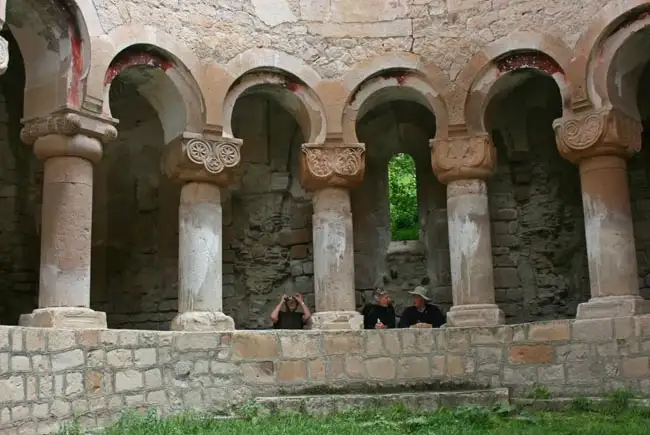

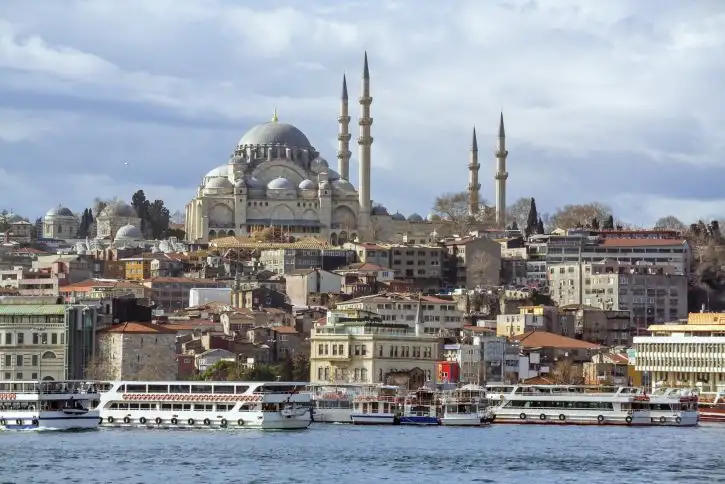
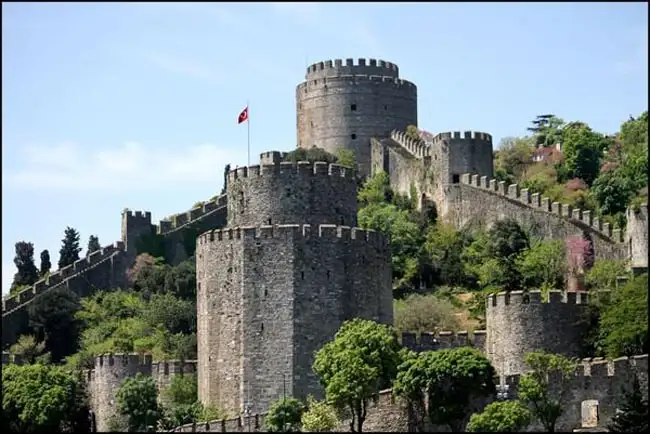
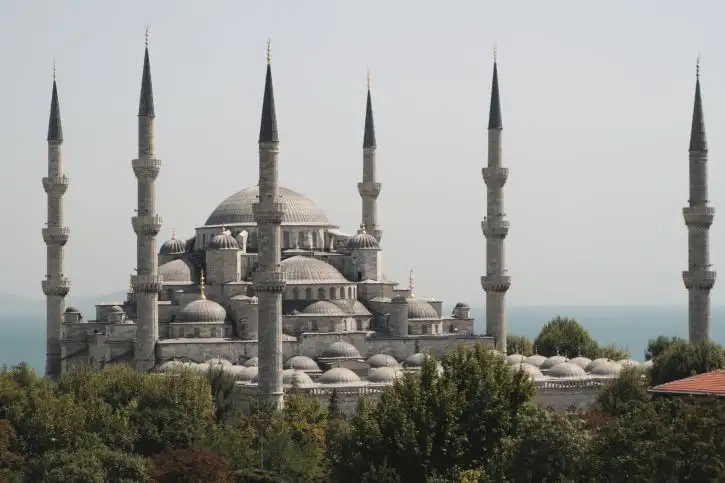
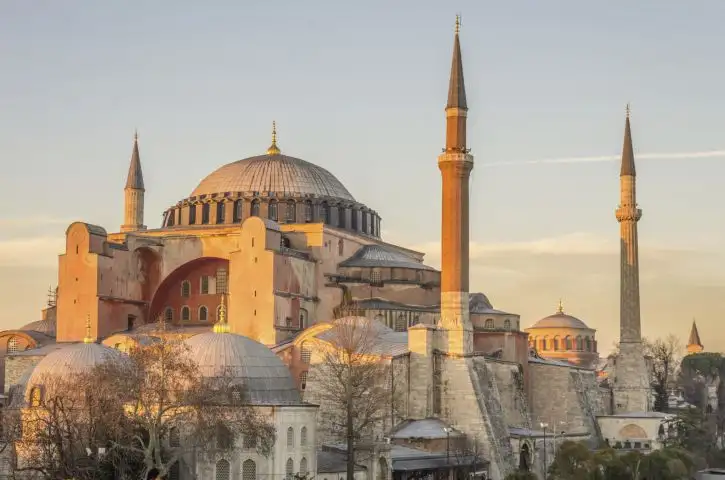
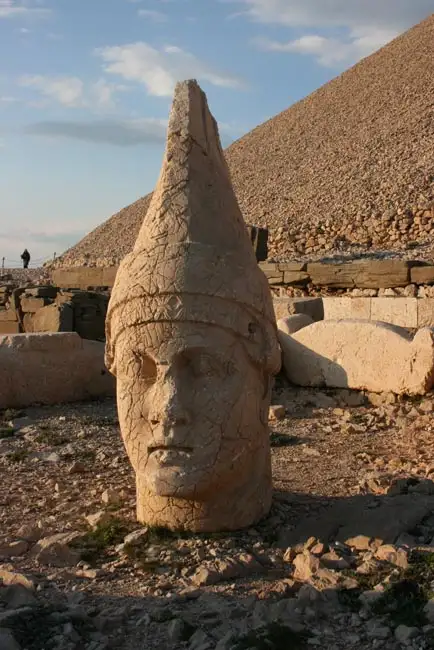

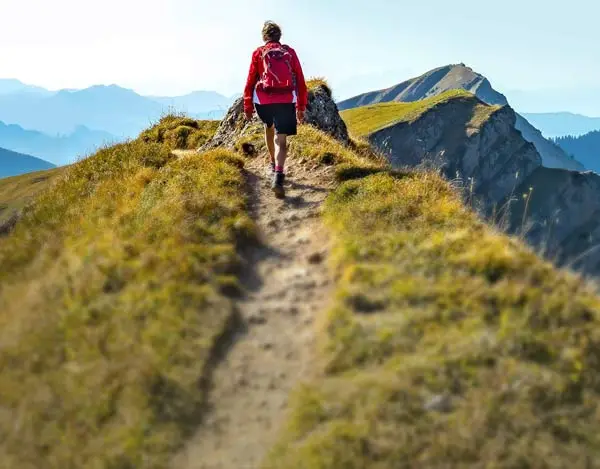
Book This Tour
- Final payment: Due 90 days prior to departure.
- Deposit: A non-refundable $500 USD Deposit is required at booking.
- Optional Single Supplement: $980 USD (number of singles limited).
(View options forsingle travellers) - Transfering Tour or Date: Transferring to another tour or tour date is only permissible outside of 120 days prior to departure and is subject to a $100 USD change fee.
(Read our cancellation policy)
Prices below are per person, twin-sharing costs in US Dollars (USD). Pricing does not include airfare to/from the tour and any applicable taxes.
Tourcode: TE10
Frequently Asked Questions
- What is the maximum number of participants on a trip?Most of our tours carry a maximum of 18 participants; some tours (ie hiking tours) top out at 16. In the event that we do not achieve our minimum complement by our 90-day deadline, we may offer group members the option of paying a "small-group surcharge" as an alternative to cancellation. If all group members agree, we will confirm the trip at existing numbers; this surcharge is refundable in the event that we ultimately achieve our regular minimum. If the small group surcharge is not accepted, we will offer a refund of your deposit or a different trip of your choice.
- Can I extend my tour either at the beginning or end? What about stopovers?Yes, you can extend your tour either at the beginning or the end and we can book accommodation in our tour hotel. Stopovers are often permitted, depending on air routing. Stopovers usually carry a "stopover" fee levied by the airline.
- How do I make a reservation? How and when do I pay?The easiest way to make a reservation is via our website; during office hours, you are also more than welcome to contact us by telephone.
A non-refundable deposit is payable at the time of booking; if a reservation is made within 90 days, full payment is required. Some trips require a larger deposit. If international airline bookings require a non-refundable payment in order to secure space or the lowest available fare, we will require an increase in deposit equal to the cost of the ticket(s).
Early enrolment is always encouraged as group size is limited and some trips require greater preparation time.
Once we have received your deposit, we will confirm your space and send you a confirmation package containing your trip itinerary, any visa/travel permit related documents, invoice, clothing and equipment recommendations, general information on your destination(s), and forms for you to complete, sign and return to us. Your air e-tickets (if applicable), final hotel list, final trip itinerary, and instructions on how to join your tour, will be sent approximately 2-3 weeks prior to departure. - What about cancellations, refunds, and transfers?Please review our cancellation policy page for details.
- I am a single who prefers my own room. What is a single supplement?All of our tours have a single supplement for those who want to be guaranteed their own room at each location.
This supplement is a reflection of the fact that most hotels around the world do not discount the regular twin-share rate for a room by 50% for only one person occupying a room. Most hotels will give a break on the price, but usually in the range of 25-30% of the twin-share rate. This difference, multiplied by each night, amounts to the single supplement.
The conventional amount can also vary from country to country and some destinations are more expensive than others for single occupancy. In order to be "single friendly," the supplements we apply are not a profit centre for us and we do our best to keep them as reasonable as possible.
On most tours we limit the number of singles available, not to be punitive, but rather because many hotels allow for only a limited number of singles; some smaller hotels at remote locations also have a limited number of single rooms available.
Please note that most single rooms around the world are smaller than twin-share rooms and will likely have only one bed. - Do you have a shared accommodation program?Yes! If you are single traveller and are willing to share, we will do our best to pair you with a same-gender roommate. Please note that should we fail to pair you, we will absorb the single supplement fee and you will default to a single room at no extra charge.
